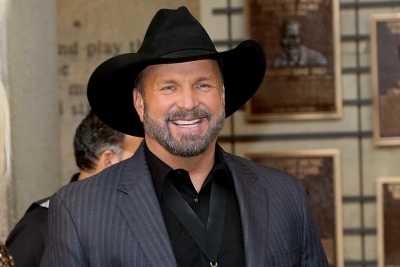Green is the new normal in the music industry. Green touring is a sustainable way to tour and engage with the fans. Musicians such as Neil Young have been doing their bit to make their touring environment friendly for sometime. Now a bevy of artists are embracing the concept of touring in a sustainable fashion by seeking green alternatives. On the occasion of International Music Day which falls on October 1, let’s take a look at some of the musicians who are taking the extra step for the environment.
Radiohead
We are of the earth To her we do retum The future is inside us It’s not somewhere else…” so go the lyrics of the song “The Numbers” by the English rock band Radiohead. The band’s frontman Thom Yorke is known for being an eco-friendly rock star. Yorke has often spoken out on the need to change the way touring operates. And he walks the talk. The musician and his band have been Championing environmental activism with their climate-conscious choices and making their tours as eco-friendly as possible. They even bought two lots of equipment which allowed them to keep one in Europe and one in America so that they wouldn’t have to fly their kit around the world. While other musicians use pyrotechnics and a range of lights on the stage. Radiohead went for LED-based lighting solutions. In the mid-2000s, they started touring responsibly, showing up with an all-LED stage lighting during the promotional tour of their album In Rainbows, surprising everyone. They continue to encourage Concertgoers to attend shows by sharing transportation services. The band plays at events with environment-friendly transport systems and opted out of famous music festival because of a conflict over environmental issues. PHOTO: AP
Neil Young
In the song “Heart of Gold Canadian-American musician singer Ned Young w having been to “Hollywood “Redwood and crossing the ocean warching for a Heart of Gold. But did the “miner for a heart of gold eventually get it? We may not know t do know that the veteran rocker has a heart of gold, one that does its init for the environment. He was one of the pioneers who spoke about green sustainable touring for instance, back in 2004, when he was promoting his latest album Grendair he biodiesel to power the tour buses. In fact, he pioneered the use of bodiesel fuel in the rock milieu. After a hiatus of four years, he performest live in public in February this year d an ecology rally in British Columbia, Canada. He had said that he would go on tour in the future only if it could be done sustainably. The foon he had sail was to have a self-sustaining, renewable tour where everything was dean from the food served to the merchandise sold. In 2022, he released his 42nd stuudio LP World Record (along with hacking band Crazy Horse) which was on how to combat climate change PHOTO AP
Adam Gardner and REVERB
Talk about being climate conscious in your actions and then taking it another notch up by launching a non-profit to help other musicians go green. Adam Gardner, the American guitarist and vocalist of the band Guster, has been steadfastly pioneering initiatives for the planet. Adam co-founded the non-profit REVERB which seeks to give the music industry a shot at being environment-friendly by making touring as climate-sensitive and green as possible. The organisation creates programmes to reduce concert and tour footprints. It does this through a variety of activities such as eliminating single-use water bottles, coordinating local farm food, using sustainable biodiesel in tour buses, composting and donating food waste. and so on. Further, Gardner and REVERB set up “action villages” for concertgoers by connecting with local and national non-profit groups and campaigns. Since its launch in 2004. REVERB has worked on over 5,000 concert events and 250 tours and has been helping to reduce the environmental impact of tours. In 2018. Adam and REVERB were named Official Music and Public Engagement Partner to the United Nations Environment Programme. PHOTO: WIKIMEDIA COMMONS
Dave Matthews Band
In 2019, the United Nations Environment Programme designated Dave Matthews Band as a Goodwill Ambassador. According to the UN body, the band’s “powerful environmental advocacy and large-scale engagement of its fan base to take action for the planet had earned it this status. It was also the first time that a full band received this recognition. An American rock band formed in Charlottesville, Virginia, Dave Matthews Band had pioneered programmes to lessen environmental impact and also worked towards educating fans on taking simple and positive steps to save the Earth. The band partnered with the non-profit group REVERB for this. During tours, the band has been using a biodiesel-fuelled bus. reducing waste, recycling and composting backstage waste, thereby reducing the carbon footprint. Dave Mathews has given interviews about how he uses his platform to sensitise people about protecting the environment and how small changes can have an impact. PHOTO: DAVID ILIFF/WIKIMEDIA COMMONS.
Picture Credit: Google



